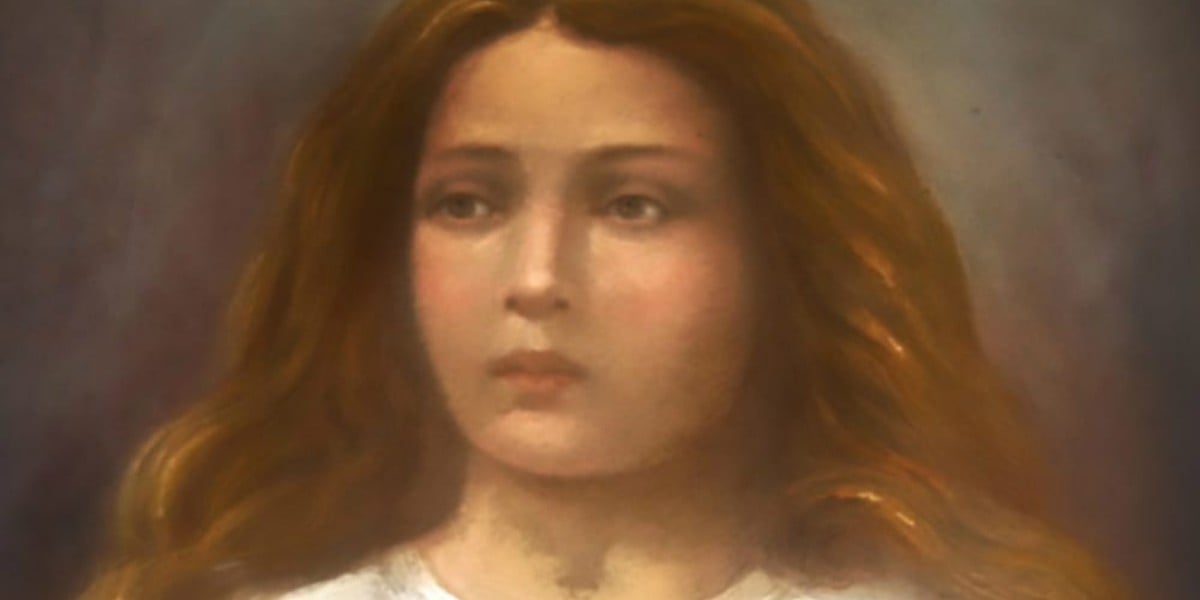Pope Leo XIV – Inaugural Mass Homily
Elected on May 8, 2025, as the 267th successor of St. Peter, Pope Leo XIV’...

In his homily at the canonization of St. Maria Goretti, a paragon of chastity and purity, Pope Pius XII notes how the example of her life and death is a call to all Christians to a persistent, even relentless pursuit of virtue and perfection.
Saint Maria Goretti was born in 1891 into a poor Italian family to begin with. But when her dad died nine years later, things grew much worse. The family was able to survive only by working for a man named Giovanni Serenelli and his son Alessandro. Maria was pious and prayerful, reciting the rosary daily for the repose of her father’s soul. But in 1902, 20-year-old Alessandro Serenelli began making advances upon 11-year-old Maria. She refused, telling him that it would be a sin. Angry, Alessandro stabbed her.
Maria preferred to die rather than be raped. She survived for 20 hours in the hospital, undergoing surgery without anesthesia. Asked if she forgave her murderer, she replied, “Yes, for the love of Jesus I forgive him…and I want him to be with me in Paradise.” Maria Goretti died on July 6, 1902, a martyr for chastity. (bio by Dr. Italy)
It is well known how this young girl had to face a bitter struggle with no way to defend herself. Without warning a vicious stranger burst upon her, bent on raping her and destroying her childlike purity.
In that moment of crisis she could have spoken to her Redeemer in the words of that classic, The Imitation of Christ: “Though tested and plagued by a host of misfortunes, I have no fear so long as your grace is with me. It is my strength, stronger than any adversary; it helps me and gives me guidance.” With splendid courage she surrendered herself to God and his grace and so gave her life to protect her virginity.
The life of this simple girl – I shall concern myself only with highlights–we can see as worthy of heaven. Even today people can look upon it with admiration and respect. Parents can learn from her story how to raise their God-given children in virtue, courage and holiness; they can learn to train them in the Catholic faith so that, when put to the test, God’s grace will support them and they will come through undefeated, unscathed and untarnished.
From Maria’s story carefree children and young people with their zest for life can learn not to be led astray by attractive pleasures which are not only ephemeral and empty but also sinful. Instead they can fix their sights on achieving Christian moral perfection, however difficult and hazardous that course may prove. With determination and God’s help all of us can attain that goal by persistent effort and prayer.
Not all of us are expected to die a martyr’s death, but we are all called to the pursuit of Christian virtue. This demands strength of character though it may not match that of this innocent girl. Still, a constant, persistent and relentless effort is asked of us right up to the moment of our death. This may be conceived as a slow steady martyrdom which Christ urged upon us when he said: The kingdom of heaven is set upon and laid waste by violent forces.
So let us all, with God’s grace, strive to reach the goal that the example of the virgin martyr, Saint Maria Goretti, sets before us. Through her prayers to the Redeemer may all of us, each in his own way, joyfully try to follow the inspiring example of Maria Goretti who now enjoys eternal happiness in heaven.
If you would like to read more about Catholic Saints Online, click here to go to The Crossroads Initiative Saints Library.
This post is an excerpt from the homily given by Pope Pius XII (AAS 42 [1950], 581-582) on the life of Maria Goretti at the canonization of St. Maria Goretti in 1950. It appears in the Roman Office of Readings for the Feast of St. Maria Goretti on July 6. The story of Maria Goretti calls to mind the biblical story of Susanna in the book of Daniel (Dan. 13).
Banner/featured image Painting of Maria Goretti by Giuseppe Brovelli-Soffredini. Public domain.
No Comments